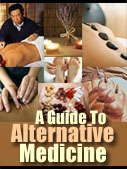Craniosacral Therapy
Craniosacral Therapy
Based in osteopathy, CST was originally developed by physician
John E. Upledger at Michigan State University after an eight year study as a professor of bio
mechanics.
Dr. William Sutherland had pioneered the idea through his work in
cranial osteopathy. Dr. Upledger was assisting with a neck surgery when he noticed rhythmic
movement of a system later to become known as the craiosacral system.
CST evaluates and helps the functioning of the craniosacral
system-the membranes and fluid-that surround the spinal cord and brain.
Using extremely light pressure on the head, restrictions are
released in order to improve the central nervous system flow and function by feeling the
rhythm of the cranioscaral system.
This method is used as a holistic and preventative approach to
healing and preventing central nervous system problems and is particularly helpful ion
alleviating the pain and even the cause of migraines, chronic neck and back pain, and motor
coordination problems.
This theory and resulting techniques have also been reported as
having a positive effect on relieving colic in infants and chronic fatigue.
Practitioners of craniosacral therapy claim to be able to locate
and release what are referred to as energy cysts, where energy has built up and then become
blocked, as in neck pain from holding ones neck at a particular angle all day at
work.
This has proven to be an extremely effective and powerful
technique, and can cause the recipient to relive all sorts of past injuries, emotional as
well as physical.
Suppressed emotions inhibit structural releases, so uncontrollable
emotional outbursts-such as crying- are common during therapy.
An experienced and reputable carniosacral therapist will have the
skills to help you move through these memories and sensations and out the other side of
them.
He/she will be able to listen attentively and remind you that
whatever caused the pain in the past is no longer present in the future. Once everything is
unblocked and realigned, the patient may exhibit better listening and memory, comprehension
skills.
What will happen at your session? Wear loose clothing and feel
free to remove your shoes. You will lie on a massage table and the lights will be
dimmed.
The craniosacral therapist will typically sit at your head first,
and place their finger lightly on either side of your temples. It is quiet and you must lie
still, they are listening.
They will pick up the tension in your temples or a clenched jaw
line. They will then move down to your torso and work their way to your feet.
What sensations you may experience during the session will be
unique to each individual, but typically you will relax to the point of falling asleep. You
may even begin to recall hidden memories and express emotion, as previously
described.
Many sessions use other types of therapy to help strengthen the
system.
Chiropractic is often used to realign the spine, relieving
pressure all the way to the clenched jaw, or acupressure or acupuncture is used to help
increase the chi flow.
This entirely holistic approach to cure and prevention of the
body's ailments is fast becoming an increasingly popular alternative to conventional methods
of physical care wherein only pain pills are prescribed or invasive surgery with long
convalescent post op care is required.
Unfortunately, most medical coverage, although beginning to change
its opinion of alternative medicine, still does not cover most holistic care
therapies.
Acupuncture, massage and chiropractic were the leading therapies
to be covered by health insurance.
There are certain conditions where the therapies of CST are not
especially helpful.
These include conditions where varietal increases in brain
pressure would not enable the ailment to dissipate.
Acute aneurysm, cerebral hemorrhage or severe bleeding disorders
can be worsened through CST therapy and should be referred out to another
practitioner.
If you elect to see a CST provider, your number of sessions will
vary with the severity of your disorder, usually 2-3 treatments a week for several weeks is
the average length of therapy.
|























